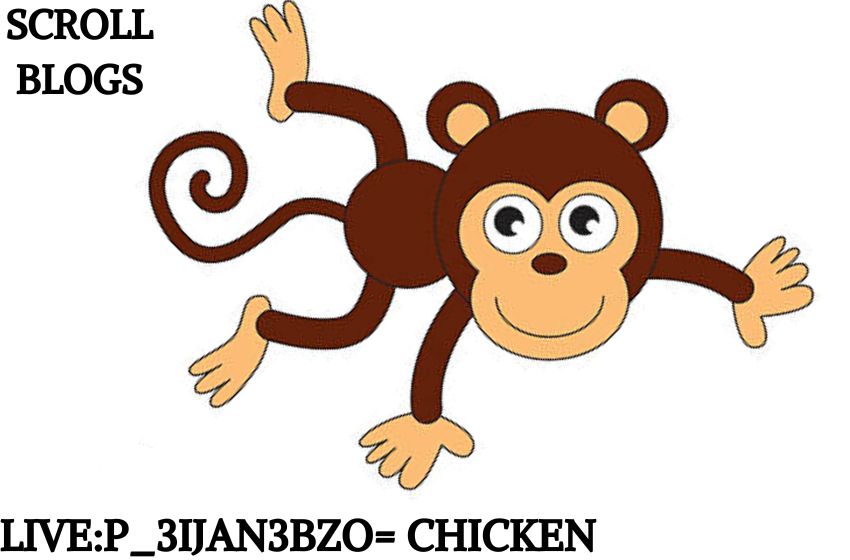Art has long been a medium for creativity, allowing individuals to express themselves through various forms. Among the most captivating themes in art is drawing animals, and one of the favorites in this category is the monkey. The phrase drawing:uqp7yroofp0= monkey might sound intriguing and perhaps technical, but it resonates with the universal joy of illustrating these lively and intelligent creatures. Scroll Blogs delves into this fascinating topic, uncovering its relevance and appeal in the world of artistic expression.
Understanding Drawing:uqp7yroofp0= Monkey
The term drawing:uqp7yroofp0= monkey can evoke images of sketches, paintings, or even digital art that depict monkeys in various styles. Monkeys are symbolic of playfulness and curiosity, making them popular subjects for artists of all skill levels. From pencil sketches to elaborate digital designs, this theme encourages creativity while offering a chance to study anatomy and motion.
For beginners, focusing on the simplicity of the monkey’s form—its round face, expressive eyes, and agile body—provides an excellent introduction to animal anatomy. Advanced artists, meanwhile, can explore dynamic poses or detailed texturing to bring their drawings to life.
The Appeal of Drawing:uqp7yroofp0= Monkey
Why do artists gravitate towards drawing:uqp7yroofp0= monkey? The answer lies in the monkey’s expressive nature. Their wide range of facial expressions, gestures, and postures makes them ideal subjects for capturing emotion and movement.
Monkeys are also deeply ingrained in cultural and mythological narratives across the globe. From Hanuman in Indian mythology to Sun Wukong in Chinese folklore, monkeys symbolize agility, mischief, and intelligence. Artists often draw inspiration from these stories to create works that reflect cultural heritage and storytelling traditions.
Techniques for Drawing:uqp7yroofp0= Monkey
Start with Basic Shapes
Every drawing begins with a foundation. For monkeys, start with circles and ovals to outline the head and body. Add guidelines for limbs and facial features. This method helps in creating balanced proportions.
Focus on Expression
The key to capturing a monkey’s charm lies in its face. Experiment with the eyes and mouth to reflect emotions ranging from joy to curiosity. This focus adds personality to the drawing.
Add Details Gradually
Once the basic outline is complete, add details like fur texture, fingers, and tail. Use short strokes for fur to create depth and realism.
Experiment with Mediums
While pencils and charcoal are common, try colored pencils, pastels, or digital tools to bring vibrancy to the artwork. Digital platforms offer layers and effects, allowing for intricate designs.
Drawing:uqp7yroofp0= Monkey in Digital Art
In the modern era, drawing:uqp7yroofp0= monkey has evolved beyond paper and canvas. Digital art platforms have made it easier to experiment with styles and techniques. Programs like Procreate and Adobe Illustrator allow artists to create lifelike textures, vibrant colors, and animated movements.
Digital tools also open avenues for creating cartoon monkeys, a favorite for children’s books and animations. This versatility makes drawing:uqp7yroofp0= monkey a recurring theme in the creative industry.
Challenges in Drawing:uqp7yroofp0= Monkey
While fun, drawing monkeys can pose unique challenges. Capturing their agility and dynamic poses requires a solid understanding of anatomy. Additionally, the fine details of their fur and facial expressions demand patience and practice.
To overcome these challenges, artists are encouraged to observe real-life monkeys or study reference photos. Life drawing sessions at zoos or wildlife sanctuaries can also enhance an artist’s ability to capture realistic movement and anatomy.
Drawing:uqp7yroofp0= Monkey for Beginners and Professionals
Whether you’re a beginner or a seasoned artist, drawing:uqp7yroofp0= monkey offers something for everyone. Beginners can start with simple sketches, focusing on shapes and proportions. Professionals, on the other hand, can push the boundaries with hyper-realistic or stylized representations.
Drawing monkeys also provides an excellent exercise in capturing emotion, making it a valuable skill for portrait artists. Their expressive faces serve as a training ground for understanding light, shadow, and form.
Incorporating Scroll Blogs in the Art Journey
At Scroll Blogs, we believe in nurturing creativity by exploring unique themes like drawing:uqp7yroofp0= monkey. By breaking down techniques and providing insights, we aim to inspire artists of all levels to take on new challenges and refine their skills. Scroll Blogs emphasizes the importance of continuous learning and experimenting with artistic mediums.
The Cultural Relevance of Drawing:uqp7yroofp0= Monkey
Monkeys hold a special place in art across cultures. In traditional Japanese ink paintings, monkeys are often depicted swinging from trees or engaging in playful antics. Similarly, medieval European manuscripts feature monkeys as mischievous characters, adding humor to serious texts.
By embracing drawing:uqp7yroofp0= monkey, artists connect with this rich history, blending contemporary styles with timeless symbolism.
Conclusion: Why Choose Drawing:uqp7yroofp0= Monkey?
Drawing monkeys offers an exciting blend of fun, challenge, and artistic growth. The theme’s versatility makes it suitable for artists of all levels, while its cultural significance adds depth to creative works.
Scroll Blogs encourages readers to explore drawing:uqp7yroofp0= monkey as a way to develop their skills and express their unique perspectives. Whether on paper or digitally, let your imagination swing free with this captivating subject!

